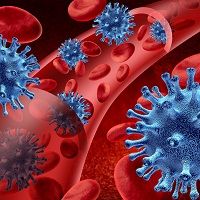Noroviruses Can Spread Through the Air
Skin-to-skin contact is not necessary to spread the virus that is responsible for over 50% of gastroenteritis cases worldwide.

Not only did researchers from Université Laval in Québec discover that noroviruses can spread by air, but they have the ability to travel meters from the infected individual.The Centers for Disease Control and Prevention (CDC) classifies noroviruses as “very contagious” and ones that can cause serious symptoms. It has been understood that the virus can be transmitted through contaminated surfaces, however, the latest study addresses the possibility of airborne circulation.
Lead author Caroline Duchaine, professor in the Faculty of Science and Engineering department, and her colleagues assessed multiple centers to find the extent of contagion.
“The measures applied in hospital settings are only designed to limit direct contact with infected patients,” Duchaine said in a news release.
The 48 air samples were collected from 8 different healthcare facilities during norovirus outbreaks. They consisted of fragments from various places in the establishments including one meter from the gastroenteritis patients, in front of the room, and at the nurses’ station.
Noroviruses were detected in the air samples of 6 out of the 8 buildings. The most common location was one meter from the infected patients, found in 54% of facilities. Outside of the rooms and nursing stations air samples showed proof of the virus as well, 38% and 50% respectively.
“Virus concentrations ranged from 13 to 2350 particles per cubic meter of air,” the statement informed. “A dose of 20 norovirus particles is usually enough to cause gastroenteritis.”
Published in Clinical Infectious Diseases, this revelation calls concern for how medical centers are supposed to prevent the virus from spreading in the facilities.
“In light of our results, these rules need to be reviewed to take into account the possibility of airborne transmission of noroviruses,” the release said. “Use of mobile air filtration units or the wearing of respiratory protection around patients with gastroenteritis are measures worth testing.”

